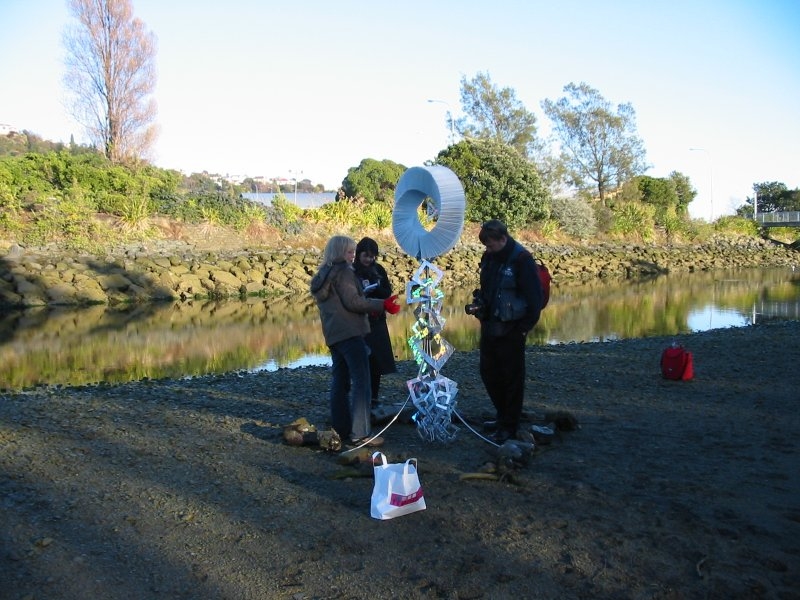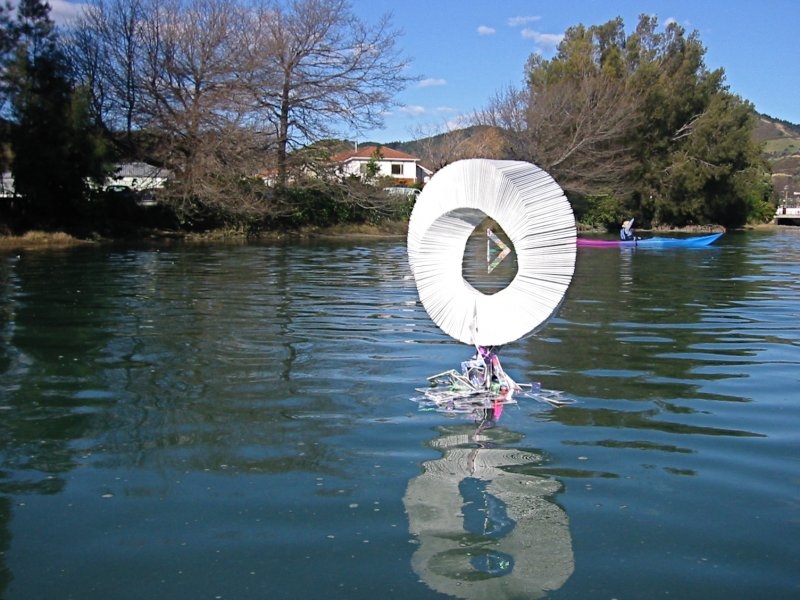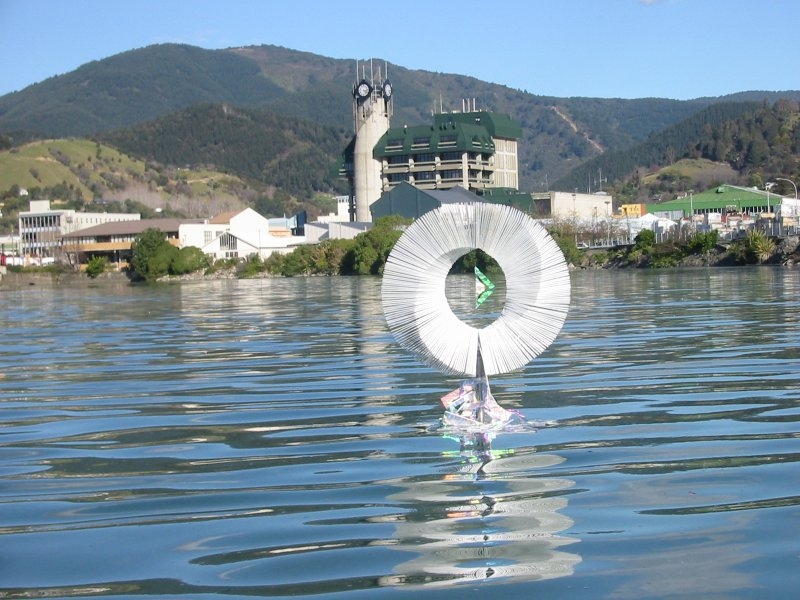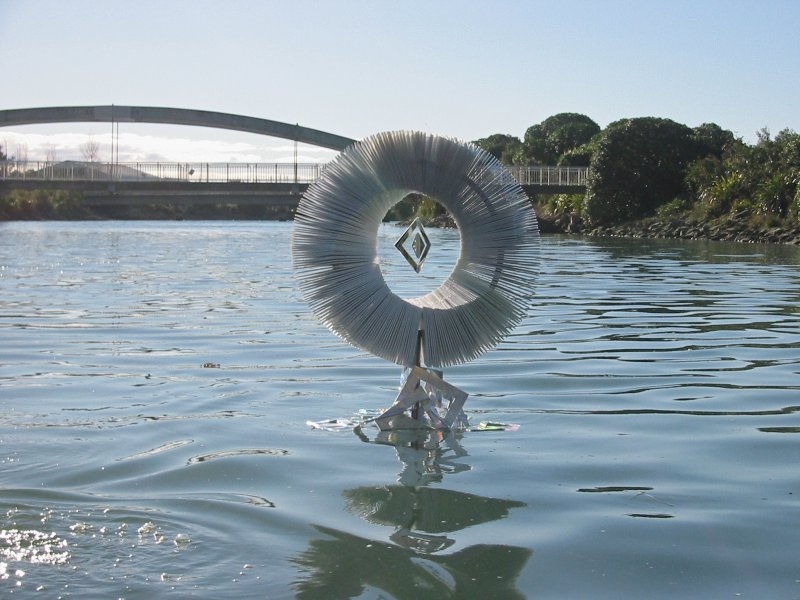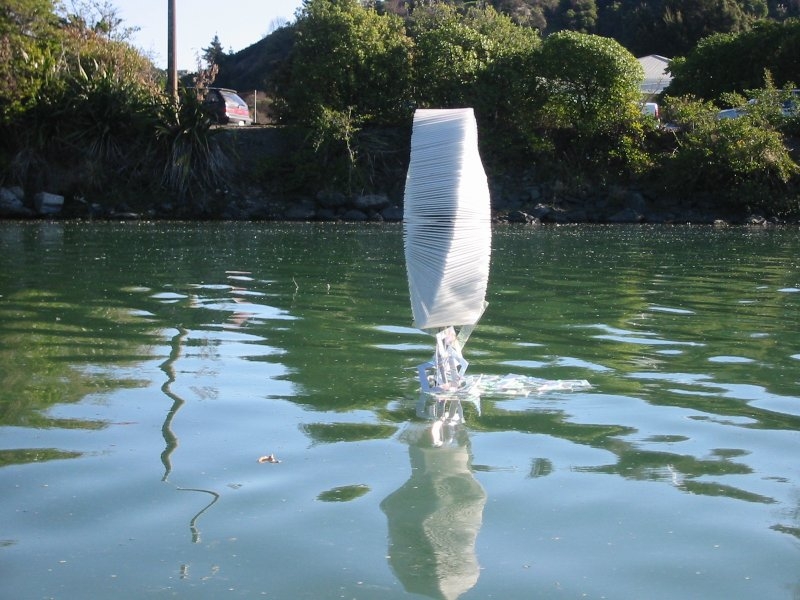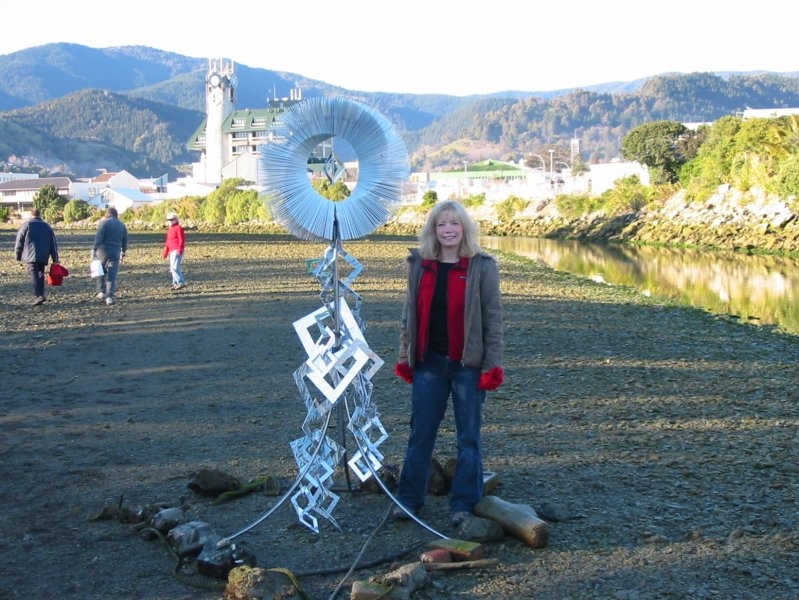outoforderoutofchaos
“Yea verily, I say unto you: a man must have Chaos yet within him
To birth a dancing star.
I say unto you: You have yet Chaos in you.”
— Fredrich Nietzsche
Thus Spake Zarathustra
“Symmetry, as wide or as narrow as you may define
its meaning, is one idea by which man through the ages has
tried to comprehend and create order, beauty and perfection.”
— Hermann Weyl
We, all of us, are caught in the tension between order and chaos. Scientists call this the edge of chaos: According to the Theories of Chaos and Complexity, it is here that all complex, self-organizing, non-linear adaptive systems — living things included — thrive: There is enough order for consistency and pattern to endure, and enough chaos to produce the uncertainty necessary for advancement, creativity, adaptation.
Because mathematics is essential to unlocking the mysteries of chaos and complexity theories, I used several mathematical concepts to help design a sculpture that would give a visual example of order and chaos. The concepts are: The Mobuis Band, Borromean Rings, fibre bundles, fractals and self-similar objects, the golden mean, Phi, and the Fibonacci numbers.
Basically, the Theory of Chaos looks at how very simple things can result in complicated outcomes that could not be guessed while the Theory of Complexity looks at how complex systems can generate simple outcomes. We’ve all experienced this: How many time have you thought something would be simple and you spend hours on it? Or, conversely, you’ve expected to struggle for hours with something that looks impossible and then it all falls into place easily?
To demonstrate this principle, Order Out of Chaos is made to look more complicated than it is: Other than the stand on which it sits, it is constructed entirely of squares. There are 290 squares in all: 248 squares were placed around the circular top of the stand to form a Moebius Band; another 40 make up the array of Borromean rings situated chaotically underneath, and two bent squares are in the centre of the band.
The Mobius Band appears as the “Order” part of the sculpture. All squares are neatly placed around the circular plane. Colour and reflection of light is absent, gone to the centrepiece. Orderly, yes, however a Mobius band is anything but simple. It is a circle with a 180-degree twist in it; the result is a single closed continuous curve with a twist, giving it infinite and paradoxal qualities that have fascinated mathematicians, philosophers and artists alike for centuries.
The interlocking squares underneath the Band appear as the “chaotic” portion of the sculpture. There is only 1/8 the number of squares yet take up more space, are more mobile and reflect light. When the tide comes in, their arrangement will change, and change again when the tide goes out. There is no sense of permanency or order. Yet their design is simple: a self-repeating pattern of three squares linked so they cannot be pulled apart (Borromean rings).
I chose the mouth of the Maitai River (in Nelson, N.Z.), where the river meets the sea, as the site for the sculpture. The uncertainty and the developments resulting from the conditions and conflicts brought about by the meeting of river, sea, air and land, is itself an interface between chaos and order.

